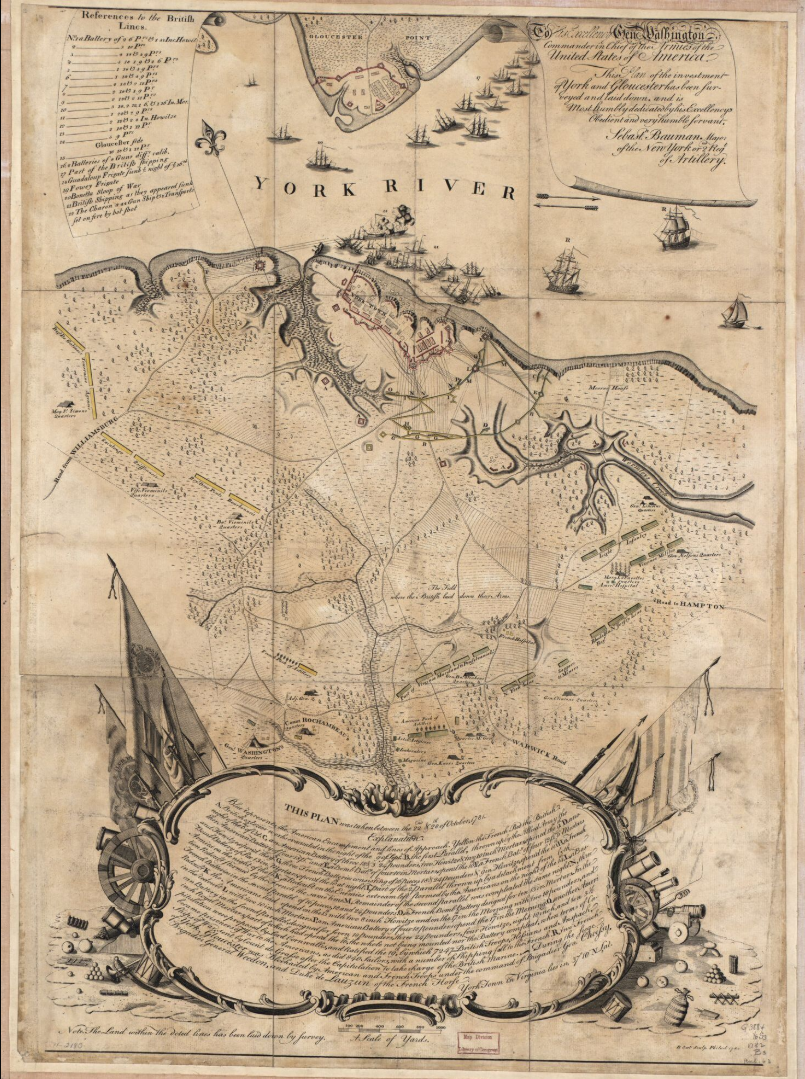On September 28, 1781, the Continental Army, led by George Washington, arrived in Yorktown, Virginia. The British had put up a defense line and defense network under orders from General Cornwallis. The defense network, or British Outworks, included batteries, trenches, and 10 outposts known as redoubts. Within a week of their own arrival, the Continental Army began work on a long trench, parallel to the British Defense Line, known as the First Parallel. The problem with the parallel was its distance from Yorktown. The artillery could reach the defense line, but not the French or American muskets. Washinton's solution was to create a second parallel much closer to Yorktown.
"...we began to open our first trench or line to lay siege to Monsieur de Cornwallis."
-Letter from Wilhelm Graf von Schwerin, German Grenadier (Historynet)

Map of the American and French siege operations.
(Credit: Sebastian Bauman) (Library of Congress)